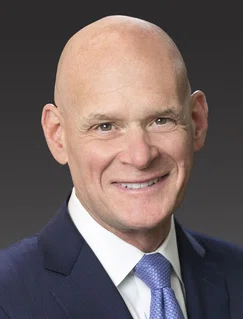Published in London & New York
10 Queen Street Place, London
1345 Avenue of the Americas, New York
Creditflux is an
company
© Creditflux Ltd 2024. All rights reserved. Available by subscription only.


Opinion Direct lending

2020 vintage investments have distributed more than 80% less cash
by Randy Schwimmer

Randy Schwimmer
Vice chairman
Churchill Asset Management
As high rates hurt borrowers, private credit firms are hoping for an uptick in M&A
A friend with a half-century of capital markets experience told us years ago: “Every time a rising Dow hits a record 10,000-increment, it gives markets a big boost of confidence, justified or not.”
We recalled this last month as the DJIA briefly sat at 40,000, a destination akin to Shangri-La not long ago. Yet barely four years from its Covid-era low of 19,173, here we are. What does this mean for credit investors? The US economy is motoring along with expected 2.4% GDP growth this year; a Goldilocks “not-too-warm” keeping things going without igniting inflation. Unemployment is on an unprecedented streak below 4%.
On the other hand, consumer sentiment surveys are stubbornly bearish. Housing costs and mortgage rates remain elevated. Food and energy prices are challenging for middle- and working-class budgets. And certain industries, such as healthcare, face challenging headwinds. While the BSL market is on a tear this year, M&A-related activity is muted. Of the $500 billion in institutional loan activity year-to-date, barely 10% is buyout related.
Large cap terms offered to small businesses
In credit, a wave of refinancings is targeted at upper-middle market loans held by direct lenders. These enhance borrower structures but compress new issue private credit spreads. Nevertheless, the average all-in yield for first-lien loans is over 11%, capping the leverage PE firms can impose on portfolio companies. Certain managers, in desperate bids to put dry powder to work, are offering large cap terms to smaller businesses. PIK-toggles provide breathing room when interest coverage ratios sink below 1:1.
Banks versus direct lenders is cast as a dramatic struggle for market share. A more balanced view suggests a cyclical pendulum swing. When the economics of CLOs (the biggest BSL buyers) work, the large cap market is open for business. But private credit operates on an independent wavelength. Armed with long-term capital from institutional investors, direct lenders can function in any economic or market environment.
Of course, all asset strategies swim in the same ocean. Buyout markets have been hampered by slower M&A activity. The bid/ask spread for buyers and sellers remains wide. Thanks to the high cost of debt financing, today’s purchase price multiples lag earlier vintages. Un-exited companies valued at $3 trillion globally (a number that has doubled over the past five years) await better conditions.
Meanwhile, distributions to paid-in capital, a good indicator of how much cash is being returned to LPs, is at historic lows. According to Goldman Sachs, 2020 vintage investments have distributed more than 80% less cash than the historic average between 2007 and 2016. This is less even than the 2018 vintage, which was 60% off the average. But GPs have adapted to this new reality. The USD 15bn in dividend recaps recorded in the first quarter was the second largest total in 15 years, according to PitchBook LCD.
Another path to realisations is the continuation vehicle. Sponsors historically sold underperforming borrowers into these special-purpose funds if a business failed to attract buyers at the expected price. Today, owners use continuation vehicles for strong performers they want to keep until favourable market conditions return.
With rates high, leveraged borrowers and their private equity sponsors walk a tightrope: risk-on with no hard landing in sight, while financing costs allow little room for performance hiccups. The media can portray amendments and extensions as financing gimmicks, yet they are well-worn features of the leveraged finance playbook. As interest coverage cushions are squeezed, giving borrowers room to manoeuvre enhances their flexibility and resilience. The same theoretically can be said about cov-lite and PIK-toggle features.
Should investors feel comfortable or anxious about this stage of the credit cycle? There’s evidence to support both bears and bulls. The good news for issuers is that markets are open for business on reasonable terms. The good news for investors is that these terms are still restrained from the worst excesses of the pre-Covid era. The good news for both is that the tailwinds in software, tech and business services propelling public equity indices are also pushing many private equity-owned companies.
A key variable for private credit managers and investors alike will be whether M&A activity picks up as the year progresses. More supply amid robust demand will help them keep their balance.





